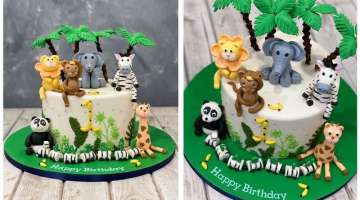The Most Unexpected Moments: Wild Animals That Want To Be Wildlife Photographers
We often see photographs of wildlife or of photographers taking pictures of wildlife. But what about wildlife photographers? That is, animals taking pictures?
- 1 | 17

It's unusual for animals to use tools, although these critters certainly seem to want to. We all know that chimps and other primates sometimes use tools, but did you know that octopuses also use them? And that crows are so smart, that they understand how to displace water? ( Tanja Askani - Wildlife photographer)
- 2 | 17

These adorable photos capture the unexpected encounters between photographers and their subjects. Some animals seem to want to help out; others get behind the camera themselves.(Source)
- 3 | 17

Shooting Wildlife (With a Camera): The more time you spend with your subjects, the more likely your images will be intimate and revealing. You know them better, and it will show.
- 4 | 17

Wild animals are going to do what they're going to do. Unfortunately, you can't ask them to look this way, do something cute, or stand where the light is better. You have to be there, and ready, when they decide to look cute or do something interesting.
- 5 | 17

Photos of wild animals can create stunning images. There is a reason why wildlife photography is so well sold - the animal world is fascinating!
- 6 | 17

Taking great pictures of wildlife requires patience, practice and some savings. Here are our top tips for photographing wildlife.
- 7 | 17

It takes time to learn the habits of wild animals. You can't expect a great photo the first time you try. Be ready to take the time to analyze the behavior of wildlife you want to photograph for a few days or more before taking photos. (Photo: Burrand Lucas)
- 8 | 17

Everywhere you live, you need to find a particular bird or animal that is common in your backyard or local park. You can use them for composition and framing techniques. This allows you to take more time to shoot and have time to experiment. (Photo: David Shultz)
- 9 | 17

If you want to capture wildlife, you should invest in a good telephoto lens. You can start with a Canon 70-300mm or Canon's 100-400mm L lens. Wild animals are very shy. With a telephoto lens, you can zoom in without having to be too close. If you are having problems in this area, consider shooting animals in parks where animals should be a little more comfortable with cars and people.
- 10 | 17

You will need to use a capsule (a puff with a tripod screw) to stabilize longer lenses. (Many telephoto lenses come with a tripod screw.) If you need to be standing up, be prepared to reach out and crawl, and stay as inconspicuous as possible.
- 11 | 17

Many wild animals move quickly and you need a fast shutter speed to freeze them on the move. A faster shutter speed will also help to prevent camera shake. An old rule states that your shutter speed should always be the same or higher than your focal length when shooting with at least a telephoto lens.
- 12 | 17

So, if you shoot at 300mm, you get the minimum shutter speed of 1/300 of a second. To freeze something like a bird, maybe you'll need a quicker shutter speed of 1/1000 or faster.
- 13 | 17

Wild animals can be extremely dangerous and you should be aware of any warning signals they display. For example, in a nature reserve in Africa, you should quickly know that rhinos will face you with the slightest noise.
- 14 | 17

But because they have a very weak vision, you can usually easily bypass them! You must always respect a wild animal that tries to stay as inconspicuous as possible, keeping you and the animal safe.
- 15 | 17

If you shoot at twilight or at dawn, you will certainly take more interesting shots. Because it's like when the animals are hunting or feeding. Also, if you shoot at dusk, you can take pictures of animals as they begin to emerge. The light at this time of day is also softer and more colorful.
- 16 | 17

Experiment with aperture. Use a small depth of field when highlighting an animal or bringing the animal's face closer.
- 17 | 17

Finally, if you are shooting an individual animal, always focus on the eyes. If necessary, adjust your AF points manually to ensure that the eyes are extremely sharp. This is what makes the difference between a lucky snapshot and a talented photo.



















